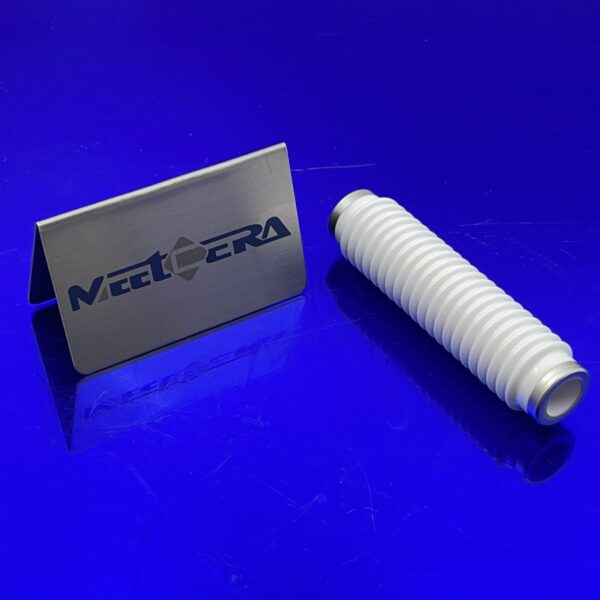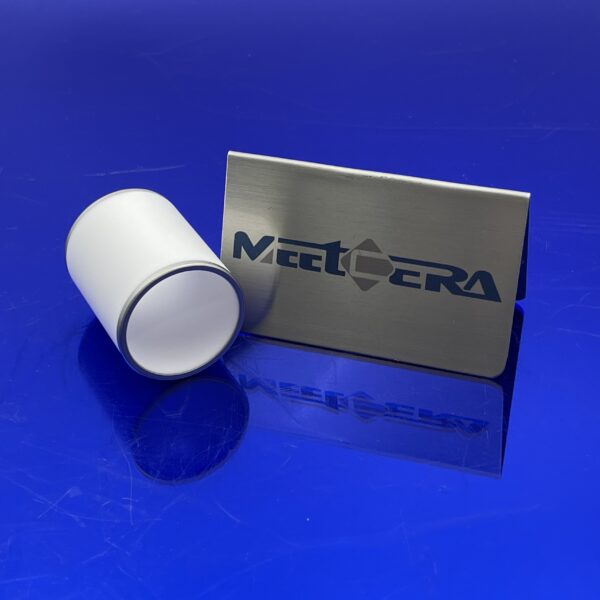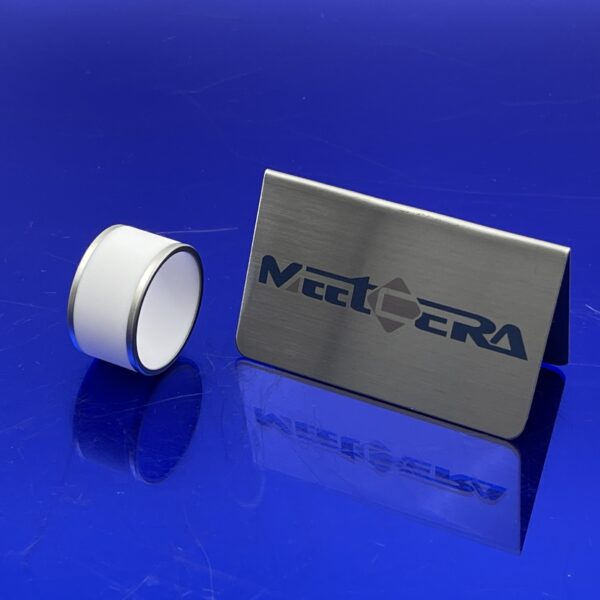Why do electronics use aluminum oxide metallized ceramics?
In my work with electronic component manufacturers, I often see the materials they use hitting limits. Modern electronics get smaller, faster, and hotter. They also need to work in more difficult places. Standard materials that were fine ten years ago might not be good enough now. This is especially true for parts that need to insulate electricity, manage heat, and be connected reliably to other parts. This article talks about how alumina metallized ceramics solve some of these big problems in electronic applications.
How do designers make sure electronic insulation works perfectly even when voltages are high or signals are very fast?
When standard insulators get hot, their ability to block electricity often decreases. At high frequencies, some materials lose energy, which affects signal quality.
Alumina ceramic has excellent dielectric properties. It maintains high electrical resistance and dielectric strength even at elevated temperatures and high frequencies. This means it reliably prevents unwanted current flow and minimizes signal loss, crucial for high-performance electronics.
I once helped a client whose high-frequency module was losing signal strength. We found the plastic substrate they used had high dielectric loss at that frequency. Switching to alumina fixed the problem instantly.
How do engineers stop the electronic chips inside from getting too hot?
If heat cannot escape the small package, the temperature inside rises. This slows down the chip and makes it fail much sooner than it should. Designers then have to add bigger heatsinks or fans, which makes the device larger.
Alumina ceramic has good thermal conductivity compared to many other insulating materials used in electronics. It pulls heat away from hot components like processors or power transistors and spreads it out. This helps keep the chips cooler, improves performance, and extends the life of the device.
Using alumina substrates allowed one customer to make their LED package brighter without making it bigger, because the heat was managed much better.
How can manufacturers create electronic packages?
Moisture, dust, and chemicals can easily damage electronic circuits. If the package is not perfectly sealed, these harmful things get in. This causes corrosion, short circuits, and eventual failure, especially in humid or polluted environments.
The metallization layer on alumina allows engineers to braze the ceramic package or substrate directly to a metal lid or housing. Brazing creates an extremely strong, permanent, hermetic seal. This seal is much more reliable than glue or plastic seals and completely protects the internal electronics from the outside world.
I saw military electronics fail in humid conditions because the plastic housing seal degraded. When they switched to hermetically sealed metallized ceramic packages, the problem went away.
What material gives electronic components and fine connection wires a perfectly flat and stable base that does not change size much with temperature?
If the base material expands or shrinks too much when the device heats up or cools down, the tiny solder joints or wire bonds can break. This leads to frustrating intermittent failures that are hard to find and fix.
Alumina is a very rigid and dimensionally stable material. Its coefficient of thermal expansion (CTE) is relatively low and matches well with many metals and semiconductor materials used in electronics. This means it changes size very little with temperature, providing a stable platform that prevents stress on interconnections.
One project involved bonding sensitive chips with very fine wires. When they used a material with a high CTE mismatch, wires broke. Using alumina solved the thermal expansion problem.
Can these materials handle cleaning chemicals, solvents, or operation in dusty or corrosive air?
Many electronic assemblies need cleaning. Some are used near chemicals. Traditional materials might react, dissolve, or degrade when exposed to these substances. This weakens the material or changes its properties, leading to failure.
Alumina ceramic is chemically inert. It does not react with most acids, bases, solvents, or cleaning agents. Its hard, dense surface also resists dust and abrasion. This makes metallized alumina1 parts very durable and reliable in harsh industrial or environmental conditions.
In a chemical plant, sensor electronics kept failing. The issue was the insulating material degrading from chemical fumes. A switch to alumina metallized insulators fixed the constant failures.
| Feature | Need in Electronics | Metallized Alumina Capability | Benefit for Electronic Product |
|---|---|---|---|
| Electrical Function | Insulation, Low Loss | High Dielectric Strength, Low Loss | Reliable signal/power handling, prevents breakdown |
| Thermal Management | Heat Dissipation, High Temp Use | Good Thermal Conductivity, High Temp Stability | Keeps components cool, allows operation in hot places |
| Packaging | Hermetic Sealing | Allows Brazing for Hermetic Seals | Protects sensitive circuits from environment |
| Mechanical Stability | Flat, Stable Platform, Strong | Rigid, Dimensionally Stable, Hard | Reliable interconnections, resists physical stress |
| Environmental Resist | Chemical/Moisture/Abrasion Resist | Inert, Dense, Hard | Durable in harsh industrial or outdoor settings |
This table clearly shows how the specific features of metallized alumina match the critical needs of electronic applications. It's a material designed for performance where other materials struggle.
How to tell if the metal layer will peel off?
When you work with components that have a metal layer bonded to another material, like metallized ceramics, one big worry is whether that metal will stay attached. If it peels off, the part fails. This article talks about that problem – how to tell if the metal layer is likely to peel or if it already has issues. Based on my experience, this is a key concern for engineers using these parts.
Why Does Peeling Risk Exist?
Peeling happens for a few main reasons. One reason is poor surface preparation of the base material before metallization. If the surface is not clean or activated correctly, the metal cannot bond well. Another reason is the wrong metallization process parameters – incorrect temperature, time, or atmosphere during deposition or firing. Sometimes, the materials are not a good match; the thermal expansion rates are too different, causing stress when temperature changes. External forces during assembly or operation can also cause peeling if the initial bond strength2 is low.
How can you know if the metal layer on a component will peel off later after it is put into service?
This is a major concern because a component might look fine initially but fail unexpectedly in the field. This leads to unpredictable equipment failures, high warranty costs, damage to the company's reputation, and potentially safety risks depending on the application. You need confidence that the bond will last under operating conditions over time.
Predicting future peeling relies heavily on ensuring the initial bond strength is high and consistent, and that the manufacturing process is stable and controlled. You must establish a robust process that reliably creates a strong interdiffusion or mechanical bond. Validation testing under simulated operational stress (like thermal cycling or humidity exposure) can also reveal potential long-term weaknesses before field failure occurs.
I remember a time a customer had field failures in their electronic modules. The metal pads on the ceramic substrates were lifting after a few months of operation in a humid environment. We traced it back to a slight variation in their supplier's metallization firing profile months earlier. The initial bond was just barely good enough, but the environmental stress broke it down over time.
How can you tell if the metal layer has already started to peel?
If a part with a weak bond gets used, it might pass basic electrical tests initially but will fail prematurely. This means quality issues are shipped to customers, leading to costly returns and potential rework or replacement of larger assemblies. Detecting this weakness upfront saves significant costs and protects quality.
You can tell if the layer is weak or peeling through various inspection and testing methods. Visual inspection can sometimes show lifting edges or blisters, but this is not sensitive enough for subtle weaknesses. More reliably, you use mechanical tests like pull tests or shear tests. These methods apply a controlled force to the metal layer to measure the bond strength. A low bond strength indicates the layer is likely to peel.
What exactly happens, and what are the consequences, if the metal layer does peel off in an application?
When the metal layer peels, its functional purpose is lost. If it was for electrical connection, the circuit opens. If it was for a hermetic seal, the seal is broken, allowing leaks. If it was for mechanical attachment, the component comes loose. The consequences are severe: the equipment fails completely, potentially causing system damage, safety hazards if high voltage or hazardous substances are involved, and total loss of the product requiring expensive replacement.
The direct consequence is loss of function. If the metal allowed soldering a wire, the connection is broken. If it was brazed for a vacuum seal, the vacuum is lost. This breakdown of the component's intended purpose leads directly to failure of the larger system it is part of. This failure can range from simple non-operation to catastrophic damage.
For example, in a high-power module, if the metallization pads peel off the ceramic substrate, the connection to the power chips is lost. The module stops working. If this happens in a critical application like a medical device, the results could be life-threatening.
Understanding why peeling happens and how to detect it highlights the need for a reliable manufacturing process. It is not enough to just test the final product. You must build quality in from the start. A supplier who understands the critical nature of metal adhesion will have strict process controls and robust testing procedures in place.
Methods We Use to Test Adhesion
We do not just hope the bond is good; we test it. We use established, quantitative methods to measure the actual bond strength.
- Pull Testing: We attach a pin or wire to a defined area of the metallization using solder or epoxy and pull it perpendicular to the surface. The force required to lift the metal layer or break the bond is measured. This gives a value in pounds per square inch (psi) or megapascals (MPa).
- Shear Testing: This is similar to pull testing but the force is applied parallel to the surface, pushing the metal layer sideways. It is often used for pads or traces.
- Bend Testing: For metallized lines or traces, bending the substrate can reveal if the metallization cracks or lifts, especially on the tension side of the bend.
- Visual Inspection: While not quantitative, trained inspectors look for signs of blistering, lifting edges, or discoloration using microscopy. This is a first check.
- Environmental Testing: Samples are put through thermal cycling (heating and cooling) or humidity testing to see if the bond degrades under stress over time.
| Test Method | Type | Measures | Reveals |
|---|---|---|---|
| Pull Test | Destructive | Bond Strength (Vertical) | Adhesion strength perpendicular to surface |
| Shear Test | Destructive | Bond Strength (Lateral) | Adhesion strength parallel to surface |
| Bend Test | Destructive | Adhesion/Flexibility | Resistance to lifting/cracking under flex |
| Visual Inspection | Non-Destructive | Surface Defects | Obvious lifting, blisters, damage |
| Environmental Test | Non-Destructive (often followed by other tests) | Bond Reliability under Stress | Susceptibility to failure in service conditions |
These tests, particularly quantitative pull and shear tests, give us data to prove the quality of the bond. We perform these tests on samples from each production batch.
Conclusion
The risk of a metal layer peeling off a component is a serious concern that can lead to catastrophic system failures. This risk comes from factors in manufacturing and operational stress. Knowing how to identify this risk is key. You need to understand that predicting future peeling relies on a well-controlled manufacturing process, and detecting existing weakness requires specific mechanical testing methods like pull and shear tests. By focusing on suppliers with proven process control and rigorous adhesion testing protocols, engineers can significantly mitigate the risk of metal layer peeling, ensuring the reliability and longevity of their metallized components in demanding applications.







No comment